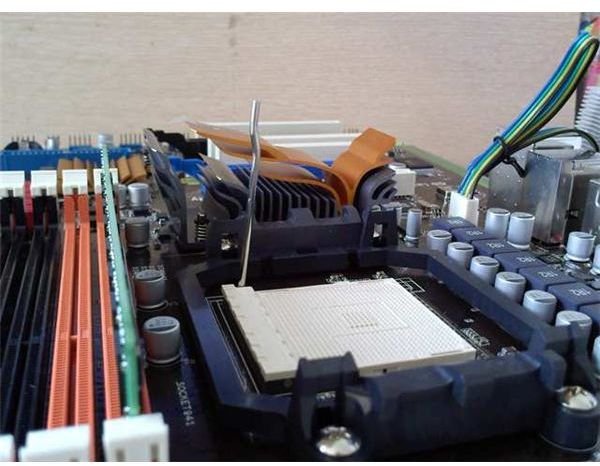Understanding and Using Motherboard Glue
What is a Motherboard?
Motherboards are the main printed circuit boards found inside PC’s and laptops and are also known as mainboards, system boards, logic boards or mobos.
By providing a central home for the various components of a domestic computer, the motherboard will feature slots for memory, a processor, various expansion ports and connectors for disk drives. It will also feature many smaller IC’s (integrated circuits) connected to the motherboard with solder.
However it isn’t uncommon to find that the motherboard also has a coating of glue around certain components. This might seem strange, especially as it can be found on components that don’t require securing.
So just what is motherboard glue, and why is it used?
(Image credit - author)
Motherboard Glue Explained
Available in two types, motherboard glue is basically glue that can be used on a motherboard or within a PC case. You might pick a tube up from a store like Maplin or any other supplier of PC components.
Using such glue can be problematic, and the consequences of these issues might result in you choosing a different adhesive solution.
The inside of your PC can get quite hot unless you have some particularly effective cooling. As such choosing motherboard glue with the right upper temperature is vital. For instance glue with a low temperature will melt more quickly than glue with a high temperature. Conversely, glue with a high temperature could just as easily melt in a badly ventilated system.
Melted motherboard glue can cause terrible problems if it touches any cabling or the motherboard itself, such as burning through shielding or destroying components or the mainboard itself. Additionally, cooled clue can remove circuitry when removed and can even be a contributing factor to a case overheating.
Who Uses Motherboard Glue?
Adhesives are used on motherboards for a variety of reasons. For instance you might be lighting up your PC case and want to get the most out of positioning your lamps.
Alternatively, you might be a PC builder who has taken steps to prevent clients from removing components such as PCI cards. This might be unpopular with your customers but is a common way of preventing unsuitable components being added.
Alternative Motherboard Adhesives
Glue is probably the best solution to securing PCI, PCIe or AGP cards, but as described earlier this can have devastating repercussions. As such it would be preferable to use other forms of adhesive wherever possible.
For instance if you’re looking for a way to position LED’s and other illumination within your case, double-sided tape would be preferable, while you might also use something like Blu-tak or a similar putty adhesive.
Similarly rubber cement can be used which has a much higher melting point than glue, while you should rule out small strips of Velcro or a similar fibre-hook connection method.
